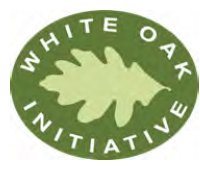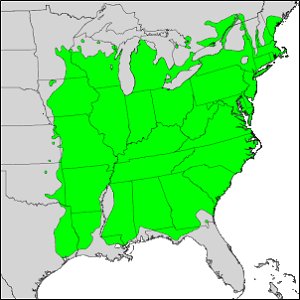AgEBB-MU CAFNR Extension
Green Horizons
Volume 24, Number 3
Fall 2020
The White Oak Initiative
Steve Westin, Private Land Forestry Programs Supervisor,
Community and Private Land Conservation Branch Missouri Department of Conservation
The White Oak Initiative (WOI) is working to ensure the long-term sustainability of America's white oak and the economic, social and conservation benefits derived from white oak dominated forests. While currently white oak growing stocks are sufficient to meet demand, forest monitoring and long-term projections indicate problems in maintaining highquality white oak regeneration in most states where it is found.
 |
White oak is critical to many wildlife species, and to industries making forest products such as furniture, flooring, cabinetry, barrels for wine and spirits, as well as for recreational activities like hunting, generating billions of dollars to local economies throughout the white oak region.
The WOI is composed of white oak dependent or interested industries, trade associations, conservation organizations, government agencies, universities, and non-profits working to ensure the long-term sustainability of America's white oak, and contributing to the conservation of white oak and white oak-dominated forests. Forestry staff from the Department of Conservation and the University of Missouri are involved in the Initiative.
Meeting the Challenge
White oak is found throughout Missouri and comprises the greatest total volume of trees in the state. However, without action, our white oak forests will face a major reduction in a generation, with significant impacts on wildlife, forest ecosystems, timber supplies and local economies. White oak is threatened by inadequate management, pests and invasives, and changing markets. Research shows that while the existing stocks of commercial-sized white oak are sufficient for estimated near term future demand (10-20 years), there are clear indications of long-term sustainability problems. White oak forests are dominated by older mature oak trees. The number and area of seedlings and small trees are significantly declining.
 |
White oak range |
To protect and enhance American white oak, we need to work together - thinking, planning and acting - to prevent a crisis. Starting today, we must help landowners and forest managers actively manage our oak forests to restore their health by removing competing tree species, prevent diseases and invasives, and create openings for this sun-loving tree to flourish.
White Oak Challenges:
- Lack of active forest management, leading to dense low-quality stands - shading the oak seedlings and preventing the growth of quality trees and the regeneration of new oak trees.
- Widespread invasive species and disease.
- Changing climate conditions affecting oak growth and regeneration.
- Marginalization and fragmentation of forest land.
- Lack of recognition of long-term threats to oak forests.
Landowners interested in enhancing existing white oaks in their woods, or regenerating new white oaks for the future may contact their local
MDC forester, https://mdc.mo.gov/regional-contacts?county=All, or
professional consulting forester, https://missouriforesters.com/.
